When it comes to coffee, there is nothing more important than its taste. But after a while, even the most thorough coffee drinkers can notice that their coffee tastes a little stale. It’s not as strong or rich as it used to be. Or maybe, you want to try something new and different. Whatever your reason, you must know how to clean a coffee maker properly to eliminate any old tastes or smells that might have accumulated in your coffee machine over time.
In this article, we’ll cover a few tips on how to clean a coffee maker so your next cup will be as delicious and full-flavoured as ever!
If you’re like most people, you probably love coffee. It’s not just a drink. It’s a way of life. You probably know how to make a cup in your sleep and can’t imagine life without it.
But what if your coffee maker starts to stink? Maybe the coffee machine has been sitting on your kitchen countertop for too long, and its plastic parts have begun to leach a strange odour into the brew. Or maybe, you recently cleaned out the coffee maker and forgot about those grounds in the bottom of the pot until they had already begun to rot.
Whatever the reason for that funky smell, there are ways to get rid of it. You can do the cleaning yourself or hire a house cleaning service to clean your kitchen, including your coffee makers.
In this article, we’ll tell you how to clean a coffee maker so that your coffee tastes as good as ever.
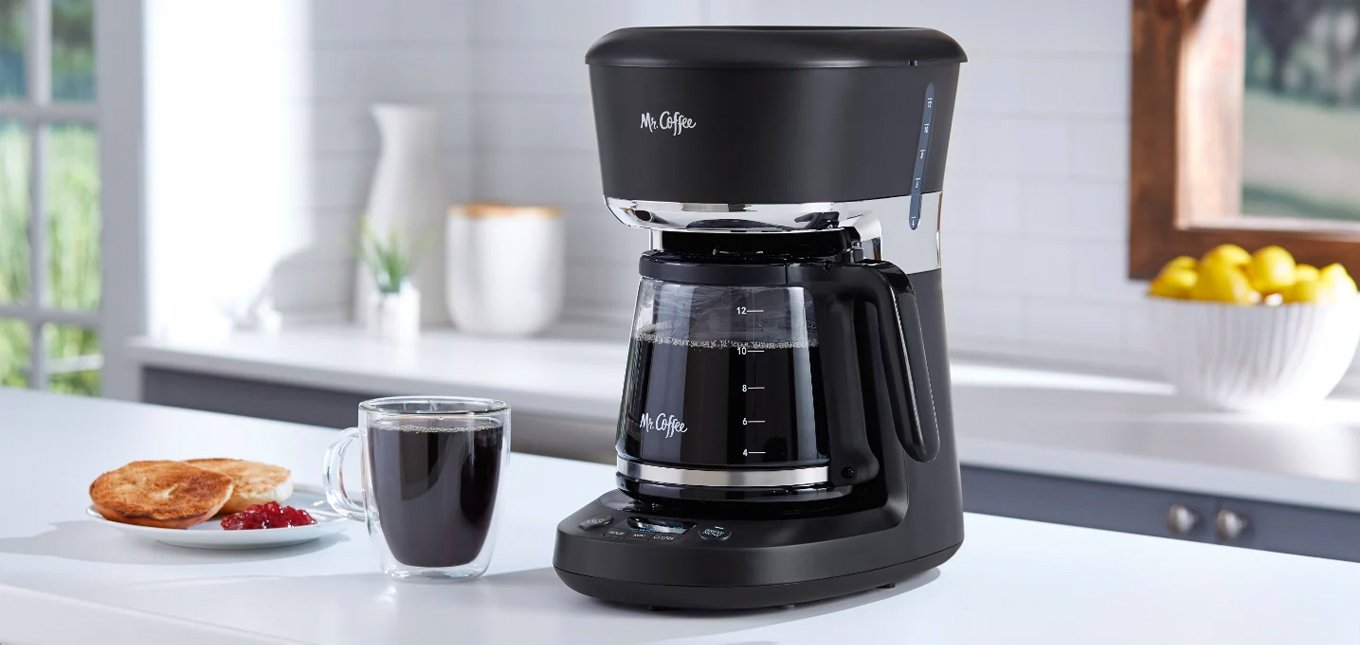
What You’ll Need
- Hot water
- Dish soap
- Paper filters
- Distilled white vinegar
- Sponge
- Clean cloth
- Microfiber cloth
- Spray bottle
- Cotton rag or towel
Instructions
1. Clean the removable parts
Clean your coffee maker machine and pour out any leftover water from a previous brew. Remove any remaining coffee grounds from the carafe, remove the brew basket and permanent filter if applicable, and wash them all in hot water with dish soap.
If necessary, remove the water filter and wash it in soapy water. Replace the carafe and empty the filter basket after that.
2. Create a white vinegar and water solution
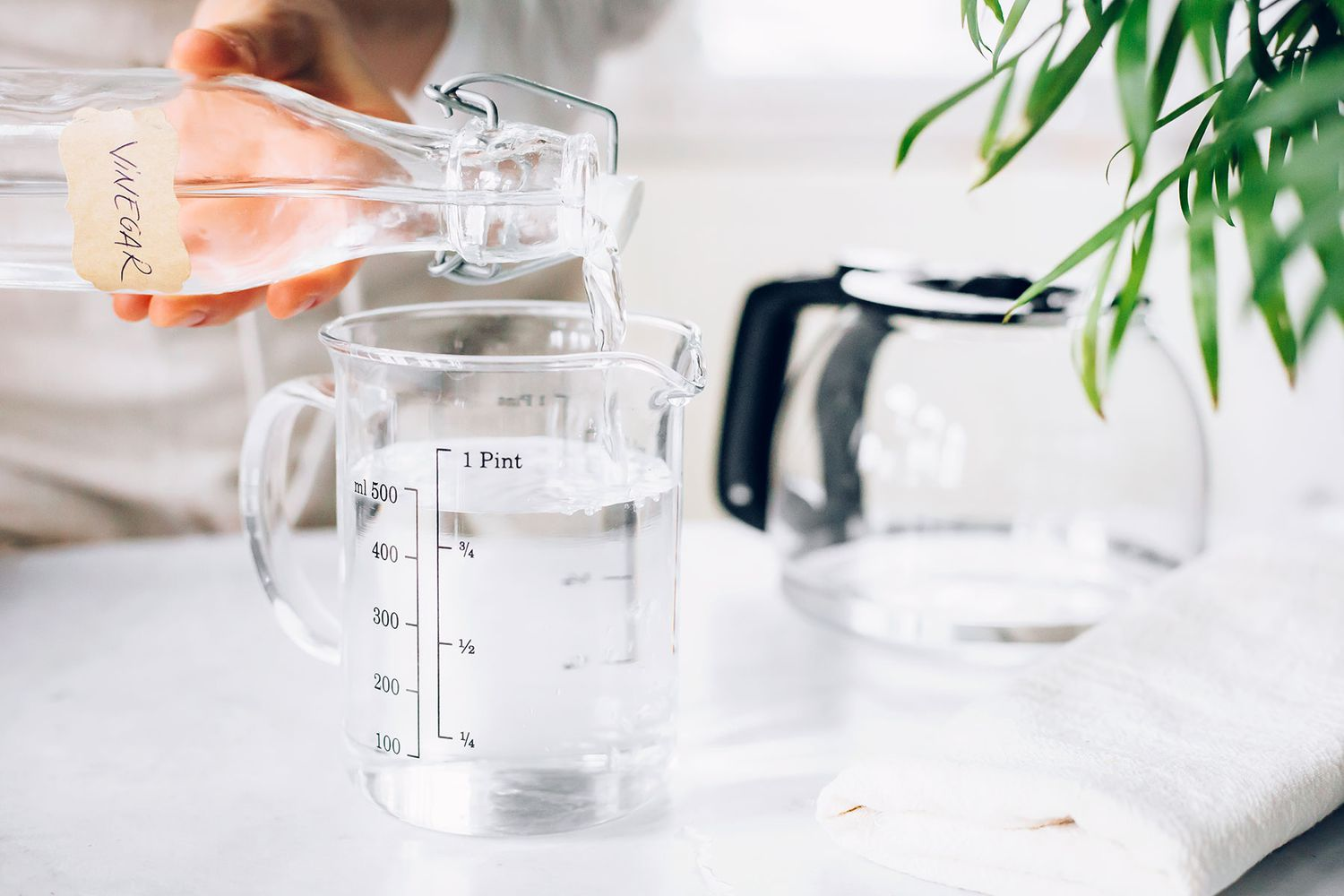
Combine one part warm water and one part distilled white vinegar to make a cleaning solution. Use the suggested amount of vinegar if your coffee machine calls for less, but create enough vinegar and hot water mixture to fill the water tank.
If you can see the levels, pour vinegar into the machine and add water. If not, combine the vinegar and water in a separate container, such as your carafe.
3. Fill the reservoir of the coffee maker with vinegar and water solution
If you didn’t mix the vinegar and water mixture into the coffee maker, fill the water reservoir of the coffee maker with vinegar solution. Also, put one in the brew basket if you use paper filters.
4. Run a half-brew cycle
Once the vinegar and water mixture is in the carafe, press the brew button. Keep an eye on the coffee maker machine while it brews to prevent the cycle from finishing. Turn off the coffee maker halfway through brewing.
If your coffee maker has a clean cycle option, you can use that instead of the brewing cycle. Typically, an automatic clean cycle starts and stops, allowing various machine components to soak up the solution.
Let the vinegar solution soak in the carafe and reservoir for 30 minutes to an hour, depending on how many mineral deposits and other buildup need to be removed.
5. Finish the brewing cycle
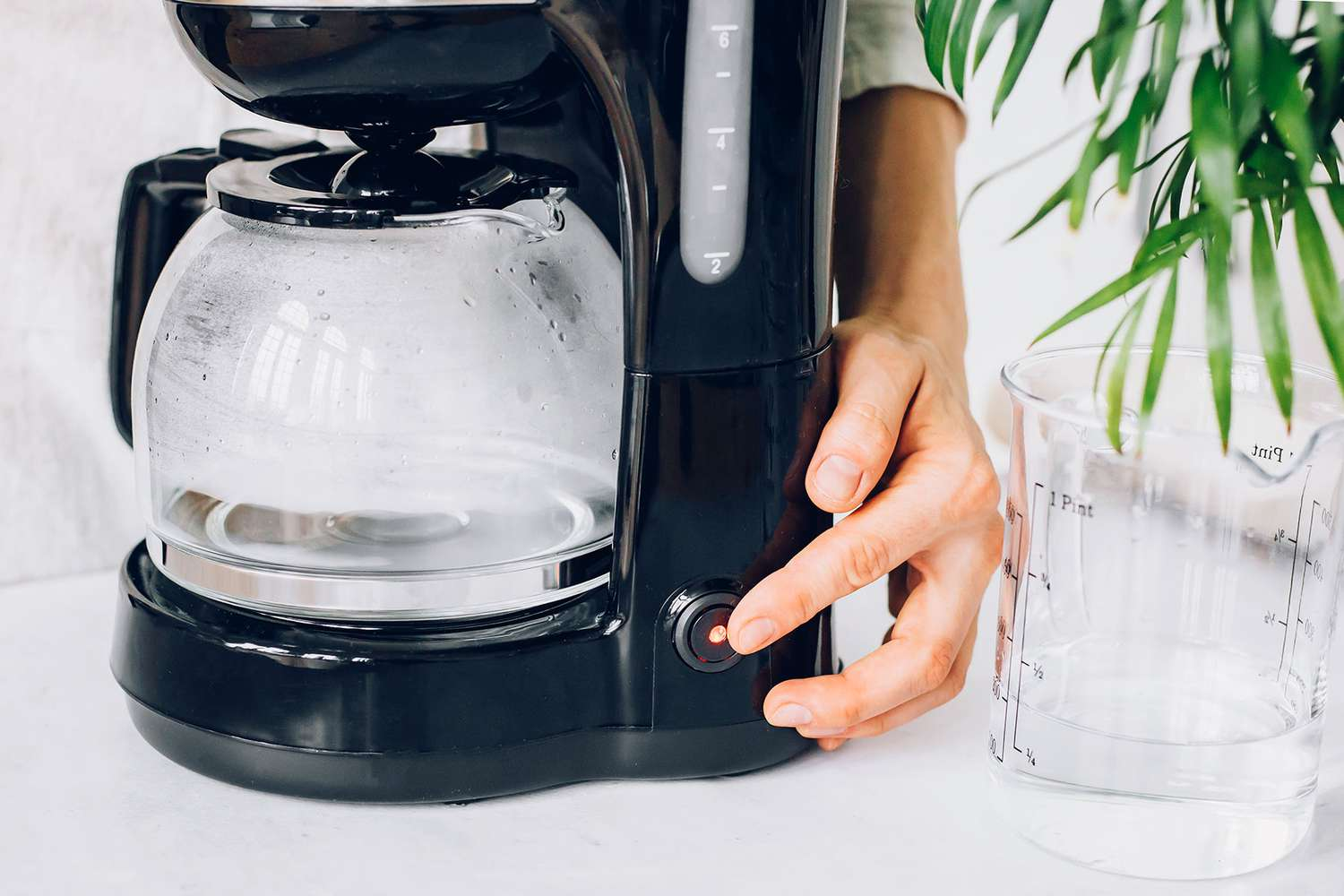
After 30 minutes to one hour, continue the brewing cycle to brew the remaining vinegar and water solution through your coffee maker machine. The water may have brown or white dots, which is expected, showing that the white vinegar solution is working as intended.
Then, pour the vinegar solution from the carafe down the sink drain once the coffee maker has finished the entire brewing procedure. There can be some solution leftovers in the coffee maker, and you don’t have to worry about them.
6. Rinse the carafe completely
To clean the inside of the carafe, use soap and warm water. You can scrub the carafe’s interior with a sponge or swish clean water and soap.
When cleaning, drain the soapy water and rinse with plain water to remove the soap bubbles.
You must know that you can repeat the vinegar steps before performing the brew cycle with water if a persistent residue or mineral buildup in your coffee maker is heavy.
7. Run a brew cycle with water twice
Fill the carafe with fresh water after rinsing it. Use as much clean water as the coffee maker can brew. Then, press the brew button to start a round with clean water and allow it to finish.
The warm water brew cycle should be repeated twice or more if you can still smell the vinegar. Repeat and run numerous water cycles until the vinegar scent has vanished.
After each cycle, the water must be emptied and then refilled. Give your coffee maker three to five minutes to cool down between cycles.
8. Wash the exterior of the coffee maker
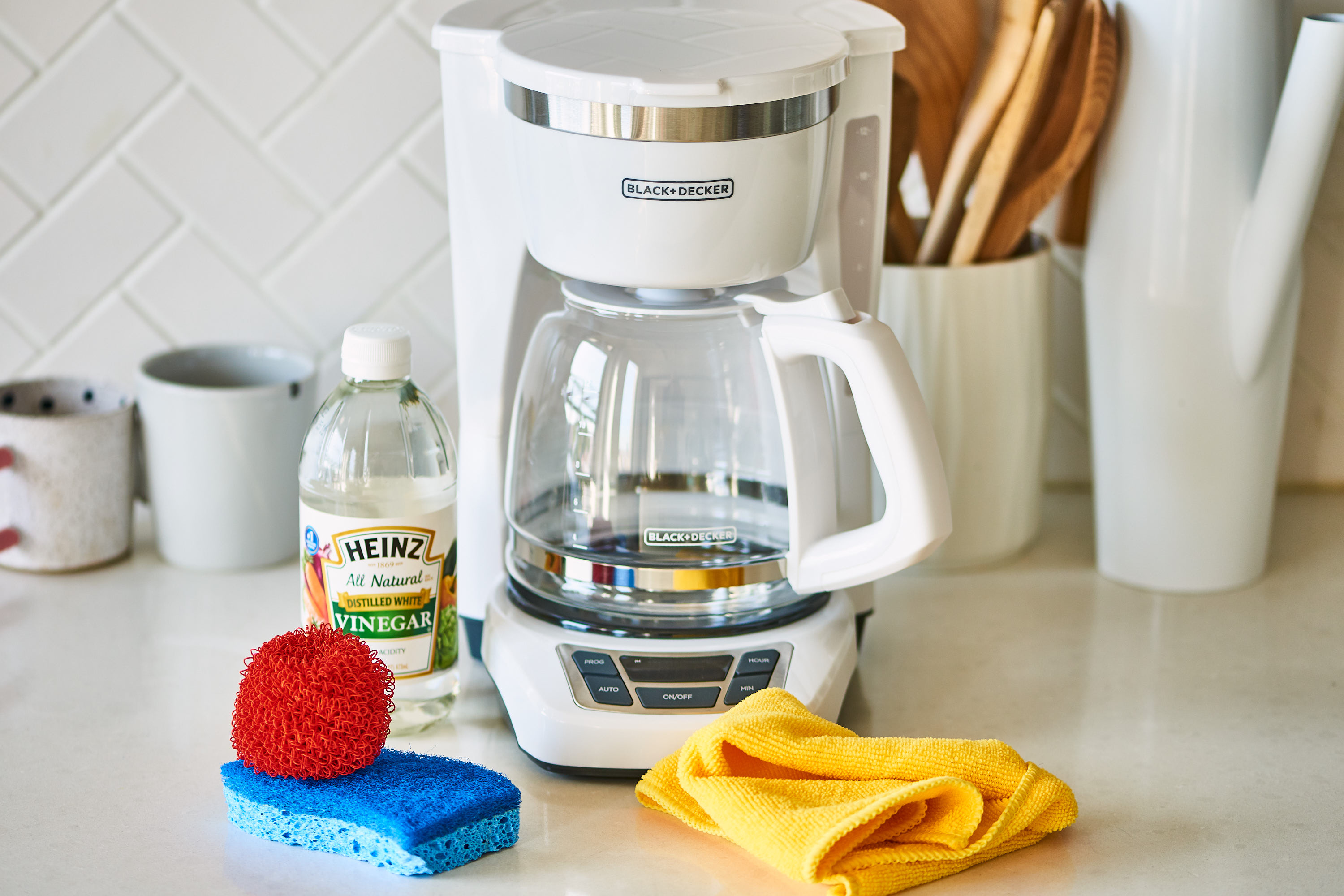
After the last brew cycle, drain the water and take the coffee maker’s carafe and basket out. Utilize a microfiber cloth and a tiny bit of liquid soap when cleaning the whole surface of your coffee maker. When cleaning your coffee maker, rinse everything with fresh water.
You can also clean the exterior of the coffee maker using vinegar spray. Fill your spray bottle with vinegar and spray some onto a cotton rag or towel. Proceed with cleaning the outside of your coffee maker. You may add extra vinegar if needed and rinse with water after.
9. Clean the carafe and basket
Pour dishwashing soap onto a sponge or cloth before washing by hand. Thoroughly scrub the carafe and basket, then give it a water rinse. Choose the pot and basket’s gentle cycle if you’re going to use the dishwasher.
Make sure there are no remaining mould or mineral accumulation traces. When you are finished cleaning, replace the carafe and basket.
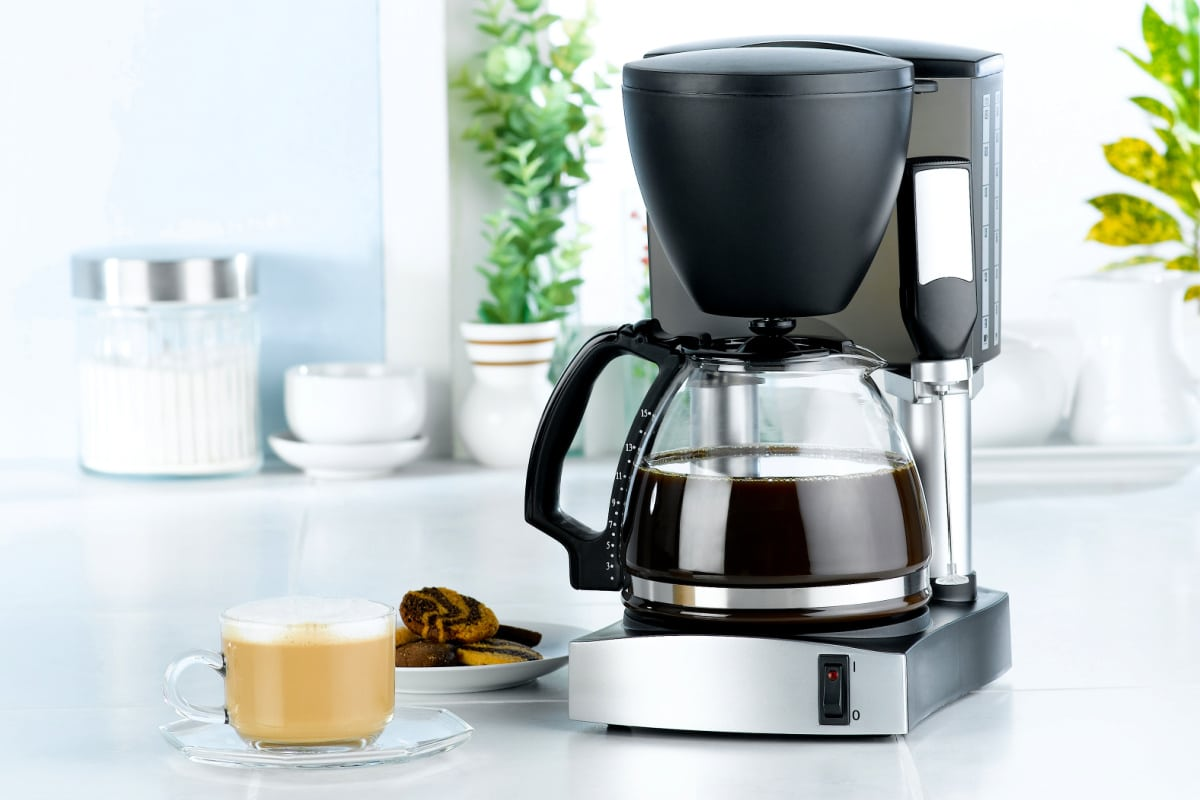
Enjoy Your Better-Tasting Cup of Coffee!
There you have it. With these tips, you can clean your coffee maker and eliminate the old taste and smell. Coffee is one of the best things in life, so why not make sure you’re drinking the best cup possible?
If you need more help with cleaning other types of coffee machines or any other cleaning tips, check out our ultimate kitchen cleaning guide for more information on cleaning everything from your kitchen sink to your oven!
FAQs
Why Does My Coffee Tastes Bitter?
Bitter coffee often results from over-extraction of the coffee grounds or using old, stale or over-roasted beans. To combat this, consider tweaking your brewing process by adjusting the grind size to be coarser, shortening the brew time, and using water that’s not too hot.
Additionally, filtered water and a clean coffee maker are crucial for a clean taste, removing potential bitterness caused by impurities or residue. These simple adjustments in your brewing method and maintenance can significantly improve your coffee’s flavour, ensuring a more pleasant drinking experience.
Why is vinegar a good cleaner for your coffee maker?
The best solution to descale your coffee machine is vinegar. Vinegar is a powerful cleaning solution that works well to get rid of odours and challenging stains.
The coffee machine is best cleaned with vinegar to eliminate any built-up mineral deposits affecting taste and performance.
How often do you need to clean a coffee maker?
Depending on how frequently you use it, you should clean your coffee maker every three to six months to reduce coffee residue and hard water mineral buildup. For a more exact time frame, consult the instruction manual that came with your coffee machine. When it’s time for descaling, a cleaning indicator on some coffee machines may light up.
Why do you need to clean your coffee maker regularly?
Coffee is full of oils that can build up over time in your coffee maker, which means that your coffee will taste bitter or burnt if you don’t clean it out regularly. Cleaning your coffee maker will help prevent this and ensure you get the best flavour from your brews.
Another reason to clean your coffee maker is that mould can grow inside it. Mould doesn’t just taste bad, but it’s also dangerous for your health. So if you notice an unusual smell coming from your machine or that taste and flavour is off, it might be time for a deep clean.


